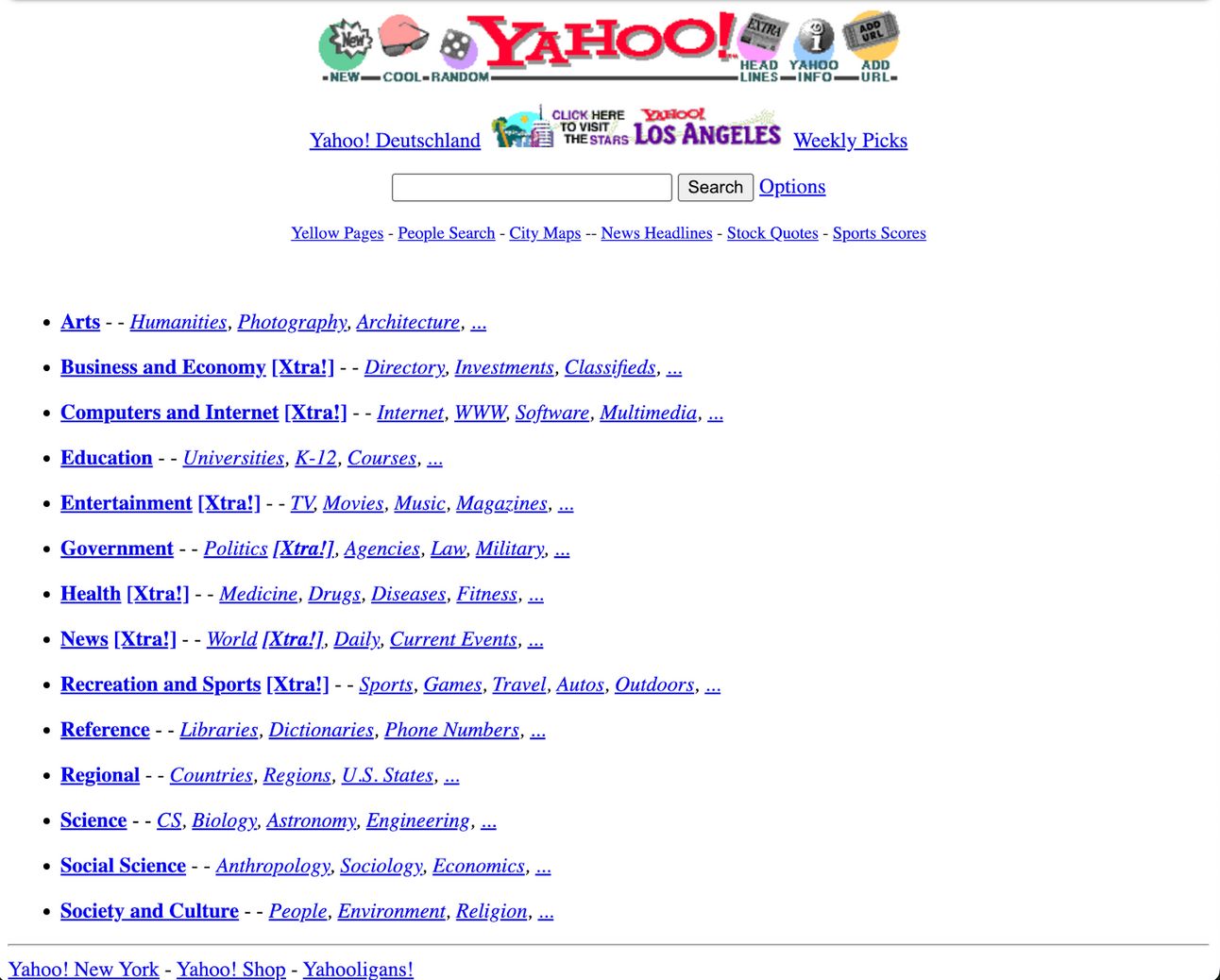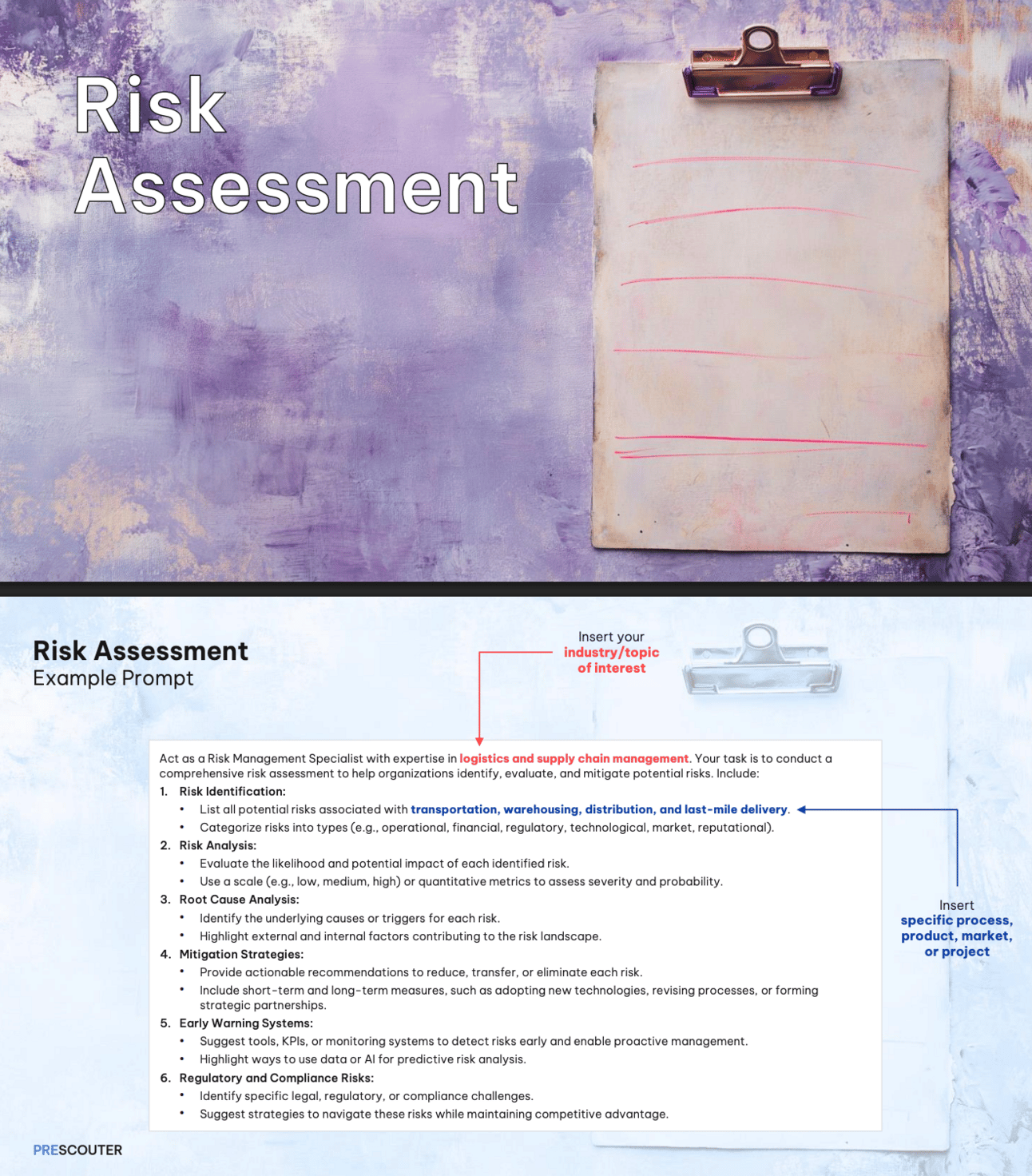- AI with Dino Gane-Palmer
- Posts
- 👉 The one skill reshaping every job
👉 The one skill reshaping every job
Prompting is the new language of work.

Hi, and happy Wednesday.
In the work we are doing with clients, and internally, prompting AI models is becoming the new minimum threshold for computer literacy.
But, to fully appreciate this, we have to zip back to the last technological disruption: the internet.
The juggernauts of the tech industry in the late 1990s, such as HP, IBM and Sun Microsystems missed the internet wave.
Why?
Because, at the time, the idea of investing money in writing HTML pages seemed like … a waste of money.
You couldn’t blame them.
Compared to the big important problems of building faster and better computers, why would you put any amount of attention into building web pages that looked like this:

Yahoo.com in the late 1990s.
Before they knew it, a new breed of tech companies emerged.
This new breed was based entirely on creating web pages, at scale, for different user needs:
Amazon for shopping
Facebook for social
Google for searching the world of web pages
And many more web-based platforms for everything from dating to news and banking
The value migrated to the companies that capitalized on delivering web pages for large audience needs.
This, in turn, created a new generation of jobs, such as:
eCommerce managers
Social media managers
Content creators / influencers
History is now repeating itself.
We’re now in the early stages of another shift in value and again, and just as investing in writing HTML pages seemed laughable, the new, emerging paradigm is also being written off.
What is this paradigm?
It’s prompting.
i.e. writing instructions for Generative AI models.
And, just as HP, IBM and Sun Microsystems obsessed over their hardware, the current generation of big tech - OpenAI, Google, Microsoft and others - are obsessing over the models.
They believe that with a “smart enough model” prompting will not be important.
But, again, a new breed of companies based entirely on artfully applying prompts, at scale, for different user needs, is emerging:
Meeting note takers - such as Fathom and Otter
Code generation tools - such as Replit and Loveable
Presentation creation tools - such as Gamma and Beautiful.ai
Unlike HTML, prompting works in natural language: the stuff you and I read and write with every day.
The knock-on effect?
Prompting can be applied in any job that involves reading and writing.
For every job that involves reading and writing, a new prompting equivalent is emerging.
And the new equivalents are quickly eating up what was there before.
The ones you can already find on job boards include:
AI powered software developers, who use prompting to create software
Content engineers, who use prompting to create marketing materials
AI artists, who use promoting to create images and video
But this is the tip of the iceberg, since prompting can be applied in any job that involves reading and writing.
To survive and thrive in the next decade - everyone must now embrace prompt engineering skills.
📕My book has an entire chapter on prompt engineering. My book summary has the most important elements on prompt engineering on one page:

The page on prompting, in the summary.
If you’re in an innovation-focused role - which I know many of you are - you might also find our Ultimate Prompt Cheat Book for R&D valuable. It includes a dozen expert-crafted prompts and tips to help you extract meaningful insights from AI.
The use cases covered include:
Tech scouting
Patent landscaping
Competitor analysis
Emerging tech identification
Innovation pipeline planning
Market research
Cost optimization
Risk assessment
Regulatory monitoring
Technology benchmarking
Technology adoption barriers
Material selection

Preview of the prompting cheat book.
Work used to be about what you could do. It’s becoming about what you can ask the AI to do.
Best,

Dino
Help us improve your experience with this newsletter.I want future newsletters to be… |